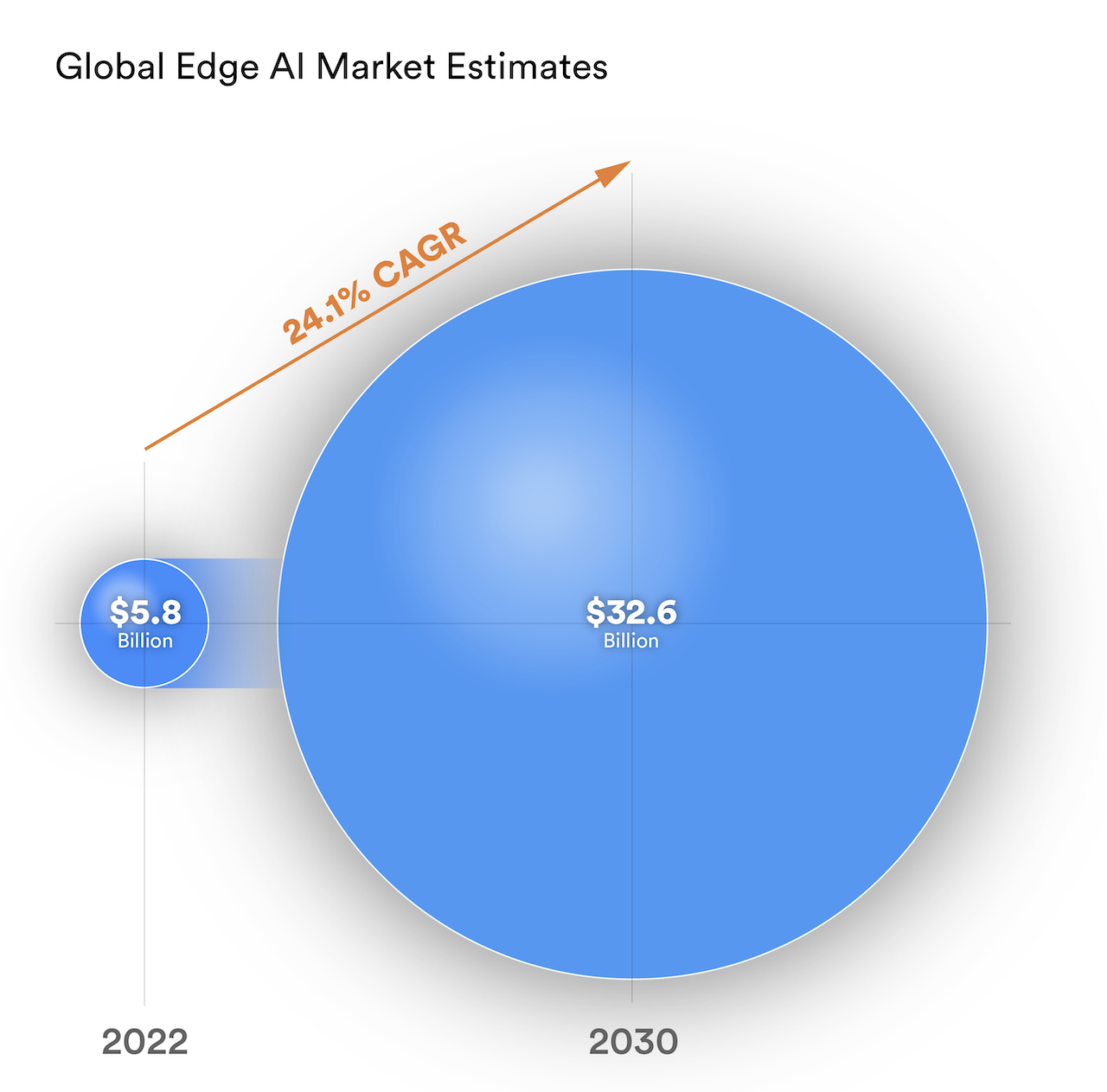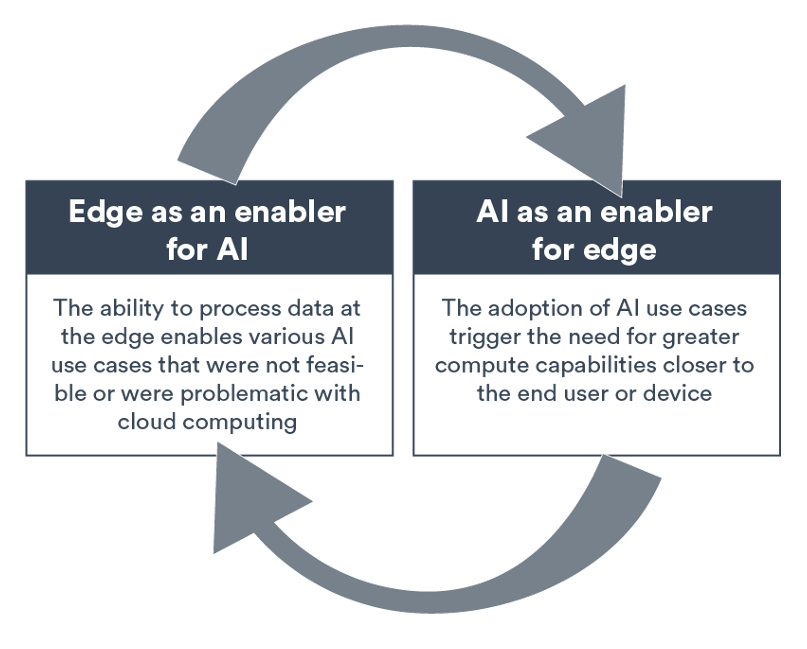Edge AI set for huge growth over next five years – here’s why

IoT and edge solutions are no longer a ‘nice-to-have’. Instead, they have become increasingly important for business operations. For the front-runners in the market, it is now a case of improving and optimising the solutions to stay ahead of the competition, and many are expected to turn to edge AI to do just that.
A range of different analyst forecasts indicate that in 2022, the global edge AI market was valued at around USD5.8 billion, rising to USD32.6 billion in 2030 – a CAGR of 24.1% – representing a huge growth potential.
Low-latency, real-time processing boosts value
Until recently, businesses aiming to implement AI into operations have had to do so via the cloud. Now that edge technology has advanced, businesses can implement local AI solutions – enabling low-latency, real-time processing.
This has several value benefits including:
- Higher productivity and efficacy – processing locally offers fast analysis and response.
- Enhanced robustness in IoT solutions – real-time monitoring can reduce connectivity disruptions and device malfunctions.
- Enhanced reliability of operations – dependence on cloud-based AI as well as the connection to the cloud is reduced.
- Improved scalability and flexibility – less data is sent to the cloud enabling growth and reimagining of operations.
- Reduced costs and improved sustainability – lower bandwidth to the cloud and lower power needs than traditional processors or the cloud reduces energy consumption.
Though the manufacturing and automotive industries are currently the main drivers of growth, there is increasing need to deploy edge AI in other industries.
Front-line of defence against cybersecurity threats
One of the biggest challenges currently facing the IoT world is end-to-end security. Malicious cyber activities are becoming increasingly sophisticated, and governments are enforcing ever-stricter regulations around data protection. This is particularly true for industries managing consumer details (such as healthcare and consumer goods) and critical infrastructure (such as manufacturing and surveillance).
Edge AI enables data to be processed locally, eliminating the need to send sensitive open information off-site. With edge AI, data can be anonymised, aggregated or encrypted before transferring to the cloud, and adapted for new threats as they arise. In this way, edge AI will play an increasingly important role in combatting cybersecurity threats.
Managing data from IoT devices
With the global IoT market value continuing to enjoy substantial year-on-year growth, the need for localised AI continues to expand. Unlike mobile phones, the number of IoT devices is not limited by the population, and there could soon be 20-30 connected devices per person. This produces an astonishing amount of data – most of which is currently sent to the cloud. This is leading to increasing energy consumption and slower transfer rates.
Employing AI at the edge will enable the localisation of complex processing and limit the amount of data sent to the cloud. This will enable the two technologies to work in tandem – with edge AI responsible for real-time processing at the device level and cloud AI responsible for making predictions using all data sources.
An evolutionary cycle

As edge technology develops, the AI model is fed more data and can learn with near-instantaneous feedback. Thus, the AI model becomes more intelligent and develops new use cases. In turn, as the AI model becomes more advanced, there is greater need for edge computing and low-latency processing.
Furthermore, as edge AI is increasingly paired with other advanced technologies (like computer vision or quantum computing) the opportunities and use cases for edge AI will continue to expand. Thus, edge AI solutions will continue to evolve rapidly in the coming years.
Sarah Woon, Research Analyst, Beecham Research
News